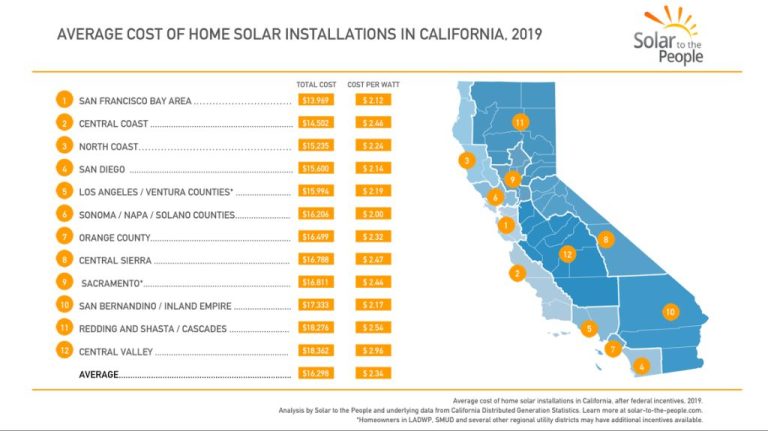How Much Energy Do Humans Get From The Sun?
The Sun is the primary source of energy for life on Earth. It provides energy in the form of electromagnetic radiation, which drives Earth’s climate and weather and allows plants to grow through photosynthesis. Understanding the amount of solar energy that reaches Earth and is absorbed by humans is crucial for evaluating our energy budgets and relationship with the Sun.
Solar energy powers the water cycle and carbon cycle, which shape Earth’s ecosystems and environments. It also influences Earth’s temperature, making our planet habitable for humans. Given the Sun’s vital role, determining how much solar energy humans acquire can provide insight into our energy dependence on the Sun.
This article will analyze the Sun’s energy output, quantify solar energy flows reaching Earth’s surface and atmosphere, examine solar energy conversion into biomass, and estimate direct and indirect solar energy utilization by humans. Calculating the share of solar energy acquired by humans is an important step in assessing our energy ecosystem and prospects for utilizing this renewable resource.
The Sun’s Energy Output
The Sun emits an enormous amount of energy, radiating approximately 3.8 x 10^26 watts into space each second. To put this in perspective, this is equivalent to nearly a trillion 1 megaton nuclear bombs exploding every second. The Sun produces this energy through nuclear fusion reactions in its core, where hydrogen atoms fuse into helium releasing tremendous amounts of energy in the process. At this prodigious rate, the total energy output of the Sun is around 10^44 joules per year, making it by far the most powerful source of energy in the solar system. This is over a million times more energy than the total global energy consumption of humans on Earth, showcasing the vast magnitudes of the Sun’s energy production.
Solar Energy Reaching Earth
Of the enormous amount of energy produced by the Sun, only a tiny fraction actually reaches the Earth. The exact amount that reaches Earth’s outer atmosphere is around 1,361 watts per square meter. This is known as the “solar constant.” However, after passing through Earth’s atmosphere, the amount of solar energy that actually reaches Earth’s surface is significantly reduced.
On average, about 30% of the sunlight that reaches the top of Earth’s atmosphere never makes it to the surface. Some of the sunlight is reflected back into space by clouds, dust, and other atmospheric particles. Other sunlight is absorbed by gases like ozone, water vapor, carbon dioxide, and oxygen. So by the time sunlight penetrates through the atmosphere, only about 1,000 watts per meter squared (on a perpendicular surface) reaches Earth’s surface on a sunny day.
The amount of solar energy reaching a given spot on Earth’s surface varies widely based on factors like time of day, time of year, latitude, altitude, cloud cover, pollution levels, and surface reflections. Areas like deserts or snowfields can reflect up to 40% of sunlight. And overcast days can reduce sunlight by up to 80% compared to a clear day. So while the theoretical maximum solar energy is about 1,000 watts per square meter at sea level on a clear day, the actual amount of sunlight reaching Earth’s surface is usually much less than that.
Solar Energy Absorbed by the Atmosphere
Of the total solar energy that reaches the top of the Earth’s atmosphere, around 19-30% is absorbed by atmospheric gases such as ozone, water vapor, oxygen and carbon dioxide. This absorption primarily occurs in the ultraviolet and visible light spectrum through photo-dissociation and photoionization of the atmospheric gases.
The absorbed energy leads to chemical and physical changes in the atmosphere like dissociation of oxygen molecules into oxygen atoms in the stratosphere. It also causes ionization of atmospheric gases producing ions and electrons. The atmospheric absorption of solar radiation powers wind systems, evaporates water and warms the lower atmosphere. So while a significant portion of incoming sunlight gets blocked by the atmosphere, this process also enables key aspects of Earth’s climate and weather.
Solar Energy Reflected Back to Space
A significant portion of the solar energy that reaches Earth’s atmosphere never makes it to the surface. Instead, this energy is reflected back to space by clouds, ice sheets, snow cover, and other reflective surfaces in a process known as the albedo effect.
On average, about 30% of the incoming solar radiation is immediately reflected back to space by Earth’s atmosphere and surface albedo. Clouds account for around 22% of this albedo effect, while ice, snow, deserts, and other bright surfaces make up the remaining 8%. The amount of reflection can vary considerably depending on cloud cover, ice extent, and other factors.
The albedo effect plays a major role in Earth’s energy budget and climate system. By reflecting a significant percentage of solar energy, albedo provides a cooling effect that helps offset the heating caused by incoming sunlight. Changes in albedo over time due to reductions in ice cover and increases in land use can further amplify climate warming.
Solar Energy Absorbed at Earth’s Surface
The Earth’s surface absorbs a significant portion of the incoming solar radiation that is not reflected or absorbed by the atmosphere. Approximately 51% of the incoming solar energy is absorbed by the Earth’s land masses and oceans.

The amount of solar energy absorbed depends on the type of surface. For example, oceans absorb more incoming solar radiation than land – approximately 88.6% versus 11.4%. This is because water has a lower albedo than most land surfaces, meaning it reflects less of the incoming sunlight.
Solar energy is mostly absorbed in the top layers of land and oceans. The absorption of heat in the oceans contributes to ocean warming and thermal expansion, which leads to sea level rise. The absorption of heat by land surfaces leads to warming of the lower atmosphere.
The amount of solar energy absorbed at the Earth’s surface provides the energy that drives various natural processes such as winds, ocean circulation, the water cycle, and plant photosynthesis. It is also a key factor in Earth’s energy budget and climate.
Solar Energy Conversion to Biomass
Plants, algae, and some bacteria capture solar energy through photosynthesis and convert it into chemical energy in the form of biomass. Photosynthesis converts around 100–115 thousand million gigawatts (TW) of solar energy into biomass annually. This biomass forms the base of the food chain and fuels life on Earth. Through a complex series of reactions, photosynthesis converts carbon dioxide and water into glucose (food) and oxygen using solar energy. The glucose provides energy for plants and also energy for animals when they consume plants. Therefore, the food we eat originates from solar energy captured through photosynthesis.
Direct Solar Energy Use by Humans
Humans directly harness the Sun’s energy in a variety of ways for heating, electricity, cooking, and more. Some of the main uses of direct solar energy include:
– Solar heating systems that utilize solar thermal collectors to heat water for residential and commercial buildings.
– Photovoltaic solar panels that convert sunlight into electricity. Solar PV met around 3% of global electricity demand in 2018.
– Solar cookers and ovens that utilize sunlight as a heat source for cooking food and pasteurizing water.
– Passive solar building design that takes advantage of sunlight for space heating and natural lighting in homes and other buildings.
– Concentrated solar power plants that use mirrors to concentrate sunlight to generate electricity on a utility scale.
– Solar water disinfection uses sunlight to disinfect water in plastic bottles, for drinking water in areas without access to safe water.
The total global capacity for direct conversion of solar energy is estimated at around 600 gigawatts as of 2018, meeting a small but rapidly growing fraction of human energy demand directly from sunlight.
Indirect Solar Energy Use
Fossil fuels like coal, oil and natural gas were formed millions of years ago from ancient plant and animal matter. The ancient plants and phytoplankton captured sunlight through photosynthesis to grow and thrive. When they died, they sank to the bottom of swamps, seas and oceans, and over millions of years the organic matter was buried under layers of sediment and rock. The intense heat and pressure turned the organic matter into fossil fuels that we extract and burn today.
So essentially, the fossil fuels we rely on were created from ancient sunlight. By burning fossil fuels, we are utilizing stored solar energy from millions of years ago. It’s estimated that the total global fossil fuel use represents the equivalent of over 400 years of recent worldwide solar energy absorption. So when accounting for this stored solar energy in fossil fuels, the total solar energy utilization by humans is significantly higher.
Conclusion
Though solar energy powers nearly every natural process on Earth, humans directly utilize only a tiny fraction of the total solar energy that reaches the planet. Of the approximately 174 petawatts of solar radiation that strikes the upper atmosphere, less than 0.02% is converted into a form that we can directly harness through solar panels, solar thermal systems, solar architecture, and plant growth. Humans mainly rely on fossil fuels that slowly stored solar energy over millions of years. However, as renewable energy technology improves and fossil fuel reserves decline, we will likely shift to using a greater proportion of the Sun’s energy more directly.
Solar power holds enormous untapped potential to provide clean, renewable energy to meet human needs. With sufficient political will and economic investment, innovations in solar photovoltaics, concentrated solar thermal power, passive solar building design, biofuels, and other technologies could dramatically increase our utilization of the practically infinite energy radiating from the Sun. With the solar resource dwarfing humanity’s conceivable energy needs, sunlight provides our species’ greatest opportunity for truly sustainable energy generation.







